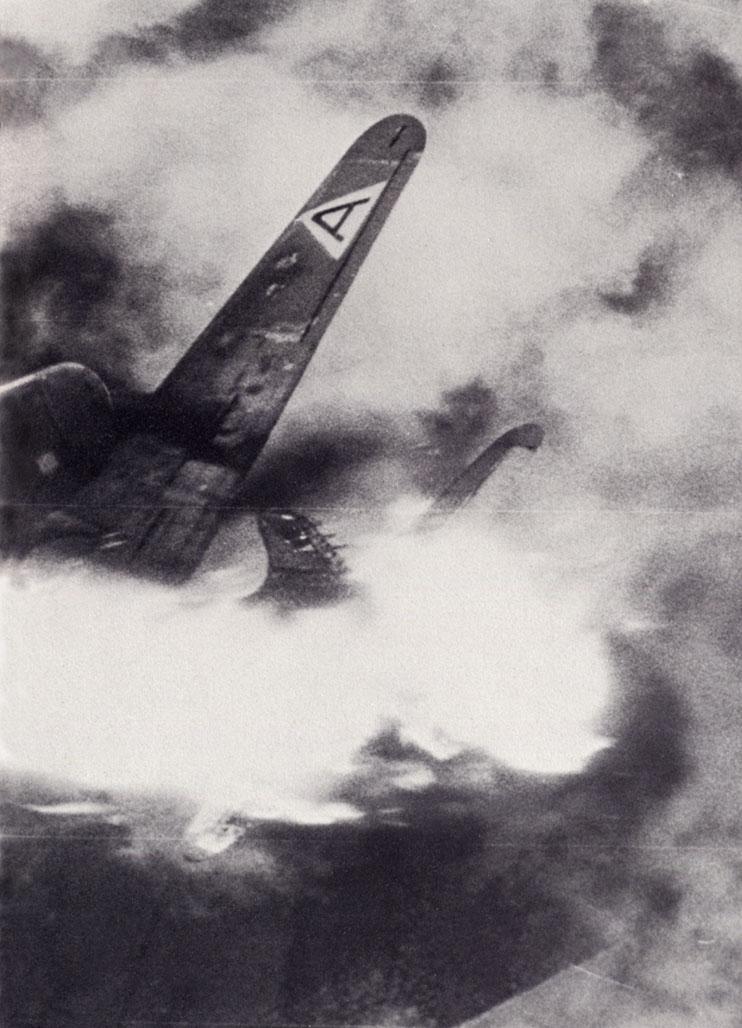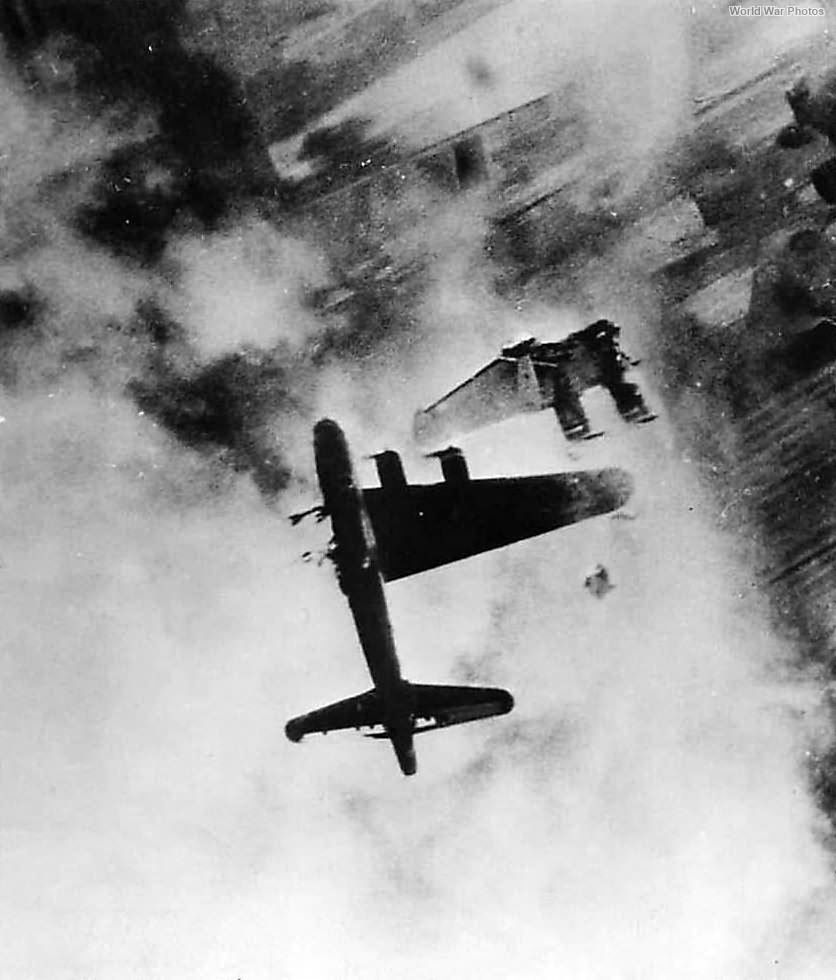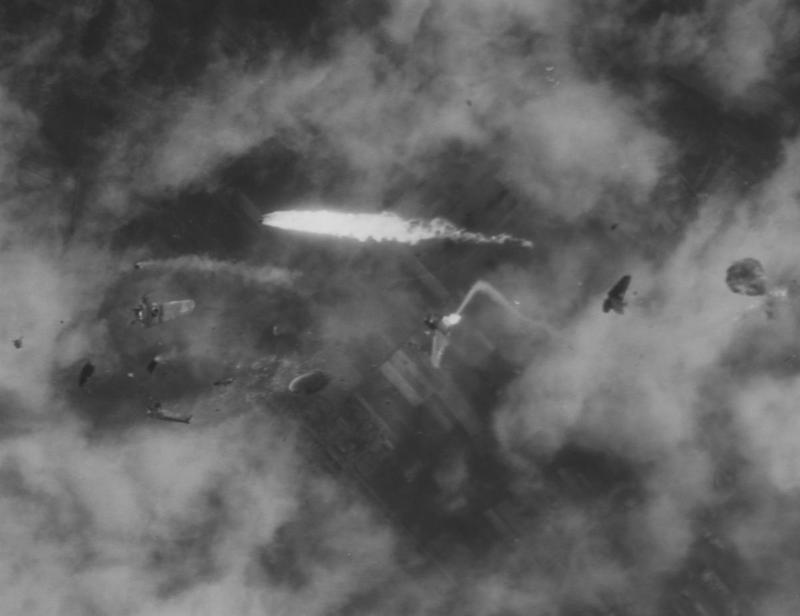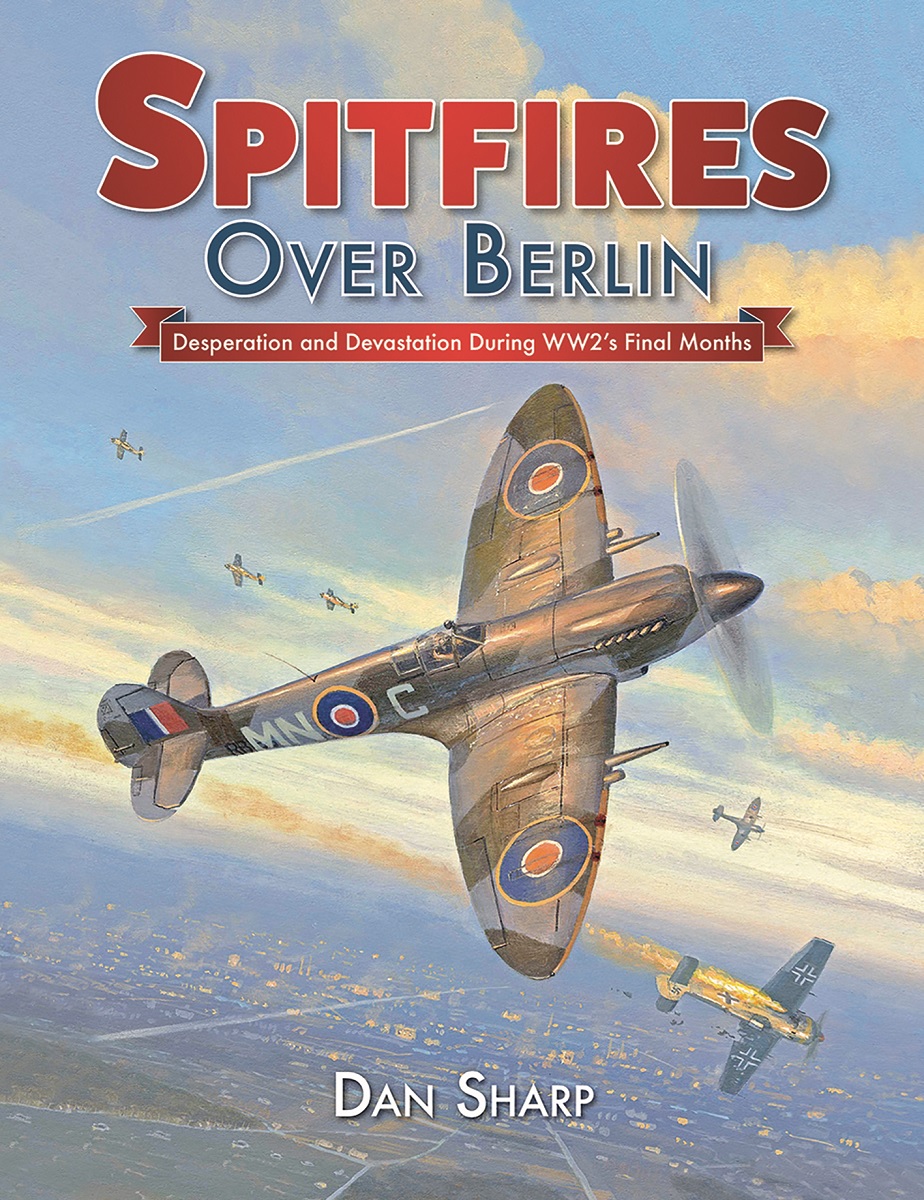One of the most iconic images of the American daytime bombing campaign over Germany was taken on April 8, 1945, and it serves as the post’s primary image
One of the most well-known images of the American daytime bombing campaign over Germany, the horrifying primary image of this post was taken on April 8, 1945. The image depicts a B-17 Flying Fortress from the USAAF 322nd Bombardment Squadron, one wing severed, falling to its death.
This horrifying image is part of a photo sequence captured by a B-17’s automated bomb strike camera, as described by author Dan Sharp in his book Spitfires over Berlin. The photo sequence captures the last 18 seconds of B-17G 42-31333 “Wee Willie” above Stendal, Saxony-Anhalt, Germany after it was damaged by an 88mm flak burst. This aircraft was the 302nd Boeing B-17G to roll off the production line at Boeing Plant 2, King County Washington.
The port wing of Willie has already sheared off in the first image, and it is spinning over its tail while engulfed in flames.

The second image, which depicts the aircraft in the final seconds of its death dive, is widely used to illustrate the atrocities experienced by American air crews during the daytime bombing campaign over Germany. There are still all nine crew members inside.

The character “Wee Willie” has blown up in the previous image. Wings, a tail, and pieces of the fuselage fall to the ground burning.

‘Wee Willie’ was part of a 73-bomber raid on the locomotive repair shops at Stendal and was flown by Lt Robert E Fuller for this sortie.
The official report from the 322nd noted that the operation was a remarkable success: “The high squadron was furnished by the 322nd, led by Lt Johnson. Strike photographs for the high squadron’s bombs show an excellent concentration of hits covering the aiming point.
“Almost the entire concentration lies within a 1000ft circle over the MPI. Meagre to moderate tracking AA fire on the bomb run which was extremely accurate resulted in minor damage to 13 aircraft and major damage to four in the group. The high and lead squadrons each lost one aircraft in the target area from flak damage.”
Lt. Peter Pastras was the pilot of the B-17G-50-B0 42-102504 Times A-Wastin’, which was lost from the 401st, the lead squadron. Lt Mike Fodroci, a navigator on another B-17, saw it burn to death. He observed the four gun batteries on the ground following bursts of flak through the lead formation as they got ever-closer to Times A-Wastin’ until the fourth one shot straight into the bomb bay of the aircraft, which was still open.
He writes in his report that: “The pilot must have been killed instantly; for the ship pulled up and veered to the right, climbing directly over our ship. Captain Shelby put our ship into a dive so steep that I was thrown up against the astro hatch of the ceiling in the nose — seems I hung there for a brief second or two.
“I also observed that a bad fire was burning on the aircraft’s forward bomb bay area and that the co-pilot was trying to climb out of the small window with his backpack on. Somehow, we saw three chutes emerge from #504 as she spun toward the earth.”
Times A-Wastin’s co-pilot, Bob Morris, was killed when the B-17 exploded in mid-air, along with all but two of its crew, engineer Lyle Jones and radio operator Bob A Smith, who were taken prisoner on the ground.
42-31333 “Wee Willie,” an aircraft from the high squadron, was lost.
S/Sgt. George Little, a gunner on board a 401st B-17, states in the Missing Air Crew Report: “I observed 42-31333 receive a direct flak hit approximately between the bomb bay and the number two engine. The aircraft immediately started a vertical dive. The aircraft fuselage was on fire and when it had dropped approximately 5000ft the left wing fell off.
“It continued down and when the fuselage was about 3000ft from the ground it exploded, and then exploded again when it hit the ground. I saw no crew members leave the aircraft or parachutes.”
Another person who saw ‘Wee Willie’s demise was able to provide an even more precise account of what transpired. On any given flight, a third of the B-17 aircraft were outfitted with bomb strike cameras. These were fitted under the floor in the radio room and the lens cone was exposed to the elements.
The cameras were set to run automatically from “bombs away” until the film ran out or until a predefined number of exposures had been made. Every six seconds, they took an exposure, and then the system wound the film onto the camera in preparation for the next picture.
In this manner, it was sometimes possible to assess the images to determine whether a mission was successful or unsuccessful. The three images above were taken during the final 18 seconds of “Wee Willie” by the automated camera on another B-17 that was flying alongside or below it.
Willie was destroyed by an explosion that tore straight through the fuselage and blasted Lt Robert E. Fuller out of the cockpit just before the final of the three. He opened his parachute and made it through the descent somehow. The rest of his crew perished in the incident.
Fuller’s ultimate fate is unknown, despite the fact that it is recorded that he was taken prisoner; in some sources, he is simply listed as “killed in action” along with his crew. After completing 127 missions, “Wee Willie” was destroyed on mission 128.

Spitfires over Berlin is published by Mortons Books and is available to order here along with many other beautiful aviation books.
Photo by U.S. Air Force via American Air Museum in Britain

